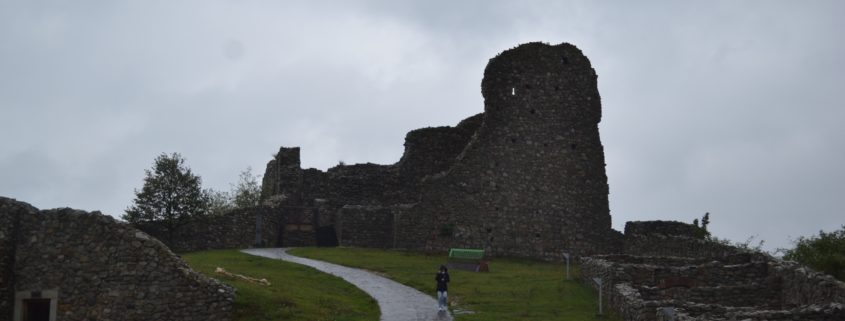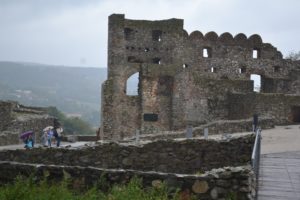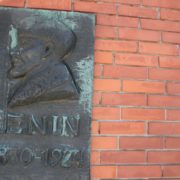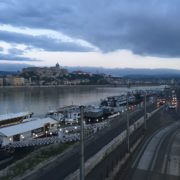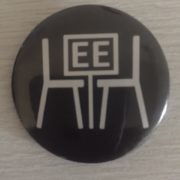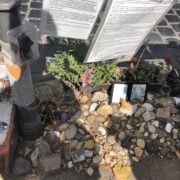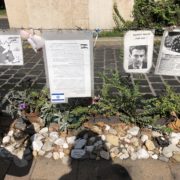Identity Without Representation: The Romani in Central Europe
By Gabrielle Marzolf
Most of the conflicts that caused and progressed the Second World War were fueled by an intense and inherent sense of nationalism. Today, remnants of this nationalism can be found in Central Europe. Countries like Hungary and Poland have physical symbols of their national pride and past injuries. The flag of Transylvania waves above the Hungarian Parliament in Budapest, in place of the European Union flag in order to keep the memory of that lost territory alive in the public’s mind, and the Hungarian historical narrative. In Wroclaw, there is a memorial commemorating territories that now belong to the Ukraine, in remembrance of the ethnic cleansing that occurred there.
These physical markers prevent the complete erasure of histories. On the other hand, historical narratives are also constructed realities; they can be fashioned and refashioned, and instrumentalized to control and shape the future. Physical places of memory make it harder for past actions to be glossed over. The monuments tie historical events into a country’s historical narrative and national identity, and represent the country on the world’s stage. They act as touchstones for people to construct their personal and national identity. It is easy to follow the histories and narratives of countries with strong nationalism; their pasts are marked with wars and treaties and retraced boundary lines, as well as memorials to the past, most often crafted out of stone. What happens, then, to the people without such nationalism, and whose past is unmarked by such physical things and remains in the oral realm. The Romani are such a people.
Today we group the Romani together as one ethnic group, though this is not culturally or historically accurate. Several sub-groups of Romani exist across various countries, and each carry along their own culture, language, and, in silence, their past. The Romani have been defined by other societies, and their past has been shaped by the narratives of other countries. As a so-called travelling people, the Romani have never had land recognized as their own, which means they have never had the ability to set down physical reminders of their presence. For other countries, historical monuments act as center points around which they weave their narratives. These places bring validation and create memory and discourse, which leads to complex and changing national narratives. Without physical places of memory, the narrative of a people can be easily swept aside.
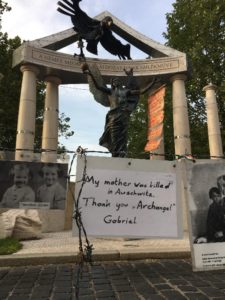
Figure 1: The Memorial to the Victims of the German Invasion, a source of controversy for the Hungarian public. (Budapest, Hungary) Photo: Gabrielle Marzolf
In Budapest, we saw the Memorial to the Victims of the German Invasion. It is a statue of the Archangel Gabriel under an attack by a German falcon, and it was issued by Viktor Orban as a way to commemorate the false history of the mass-killing of Hungarian Jews by German soldiers. This narrative posits the idea that both the Hungarian government and Hungarian civilians were blameless and committed no crimes, and that they themselves were the only victims of the German Nazis. The Hungarian Jews who died are not mentioned once, and the symbolism of the memorial is mainly Christian. Hungary is a predominately Christian nation. While this memorial grossly misrepresents the history of Hungary in the second world war, it created a discourse surrounding that narrative. Several people came out to create an opposition memorial across from the statue, full of news clips, pictures, and personal stories of the actual victims.
This Living Memorial is maintained by the people, and has opened a channel for Hungarians seeking the truth to discuss the history of their country. The identity of Hungary remains in flux, but due to the feuding memorials, the true and false historical narratives are represented which allows the civilians to negotiate the identity of Hungary amongst themselves.
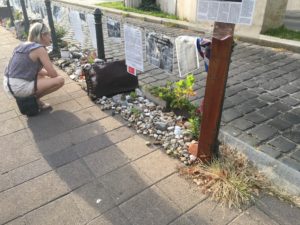
Figure 2: The Living Memorial, a response to the Hungarian monument. (Budapest, Hungary) Photo: Gabrielle Marzolf
The Romani are the largest minority in Hungary to date. The Arrow Cross deported 28,000 – 33,000 Romani out of Hungary during the second world war. It is estimated that between 50,000- and 60,000 Roma living in Hungary suffered persecution, and around 12,000 were murdered. However, the Romani are largely excluded from the discourse produced by the memorial in Budapest. If anything, they are mentioned as an afterthought, usually in a sentence such as “And x-amount of gypsies and homosexuals were also murdered.” The Romani are marginalized in Hungarian society, which means they have little means or access to the discourse surrounding Hungarian history. They have no method of inserting themselves into the narrative, and there is no physical memorial to their place in the past. It is difficult to argue on the grounds of a case that everyone is choosing to ignore. Hungarian civilians and Jewish victims or their families use the statue of Gabriel to oppose the falsification of history. However, no one speaks for the Romani. Without a physical monument to commemorate the suffering of the Romani, they are losing a way of entering historical narrative of Hungary, and of validating their historical experiences.

Figure 3: Personal things the public have added to the living memorial. (Budapest, Hungary) Photo: Gabrielle Marzolf
On the outskirts of Bratislava, the castle Devin is preserved and open for tourists to come and relive the various conflicts that took place here. Several ethnic groups have tried to claim Devin throughout the years. As a result, Devin operates as a place of memory for various nations. Many cultures can reflect on Devin as an important part of their history. The reason Devin was claimed and fought over and re-claimed was because the physical castle symbolized who was there; it served as a reminder of boundaries. The Czechs, Slovaks, Germans, and Poles can look back to the Devin and remember a time when they had conquered or fought over the castle. The castle represents the groups who had existed on that land, allowing them to be present in the historical narrative. The narratives are conflicting, but contribute to the negotiating of identity for the countries and peoples involved. People have a place to go to remember their history, and discuss it.
In Slovakia, the Romani have been pushed to the fringes of society. Romani children are not welcome in public schools. There are few governmental initiatives that successfully help integrate Romani adults; more fruitful efforts tend to come from NGOs. Europeans cannot comprehend the traditional Roma ways, and which leads to prejudice that harms even “modern” Roma, or Roma who conform to a more Western lifestyle. Part of the issue is that, as a traditionally nomadic people, the Romani have never had a land to call their own. They never left a permanent mark, which makes it difficult to dispute their historical legitimacy. It feels as if Europe is waiting to expel the Romani out of its continent, and in the interim, refuses to validate the people’s existence or their historical claims and narrative.

Figure 4: The Devin Castle, previously fought over by various nations and peoples.
(Bratislava, Slovakia) Photo: Gabrielle Marzolf
The one monument to the Roma we saw was in the Romani work camp Lety near Prague. It is a simple, unassuming monument located behind an Orthodox cross, with few words to indicate what had transpired at that place. Currently, a commercial pig farm is located on what is assumed to be a mass grave of the camp. The situation has been a source of an ongoing struggle between the Romani community, the government, part of the Czech community, and the owners of the farm. Little official efforts have been made by the government and the public to preserve the Romani historical memory, or show it the respect it deserves.
The discussion in Hungary surrounding their memorial, and the discussion in the Czech Republic surrounding the work camp contrast each other greatly. The first is an involving, attention-getting, discourse-generating conversation, centered mainly around the Jews and Hungarian offenders. The latter is a quieter battle between a small community and the government over a shocking insult to the memory of Romani victims. Both cases involve people with historical legitimacy, but the Roma do not receive the same representation as the Jews; therefore, their identity as victims, as Europeans, as citizens and even really as humans in Central European societies, is disregarded.
During our seminar, we saw how physical places of memory can act as centers of public debate and discourse, which can help clarify historical issues. Today, countries are rewriting history as a way to change the identity of who they were, and who they are. It is a vigilant battle to keep narratives straight and honest, in order to do the past justice. Even false narratives, when challenged, contribute to keeping the debate about identity of a country alive; they rely the internal struggles that country faces in coming to terms with tis past. For people without physical places of memory, like the Romani, the struggle is not negotiating its past but simply gaining representation in the present.

